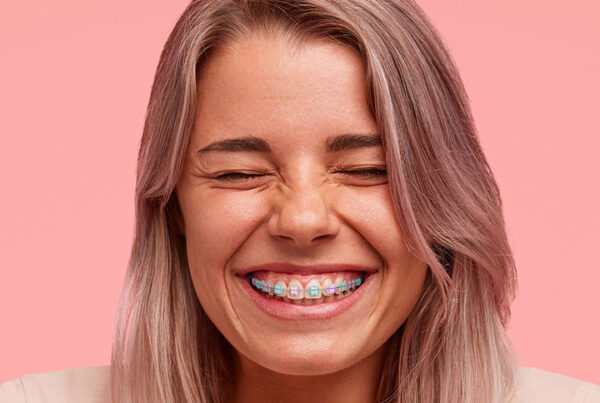Maintaining a healthy smile after orthodontic treatment requires consistent care, and flossing with a Permanent Retainer is essential to that routine. Food particles and plaque can easily build up under the retainer and between teeth, increasing your risk of cavities and gum disease.
Flossing daily helps remove these culprits, keeping your teeth and gums clean and healthy. You can ensure your beautiful, straight smile lasts a lifetime by taking a few extra minutes daily to floss properly.
What are Permanent Retainers?
A Permanent Retainer is a fixed metal or strong fiber wire attached to your teeth using a special bonding agent. This wire holds your teeth fixed, and Permanent Retainers are more common on lower teeth. They usually only affect your front four to six teeth. The orthodontist attaches the retainer to the back of your teeth so it’s not visible, but you can feel it with your tongue.
Professional Recommendations For Flossing with Permanent Retainers:
Flossing with a Threader
A floss threader is a tool that resembles a large, flexible sewing needle. It makes it easier to thread floss under dental wires and between teeth.

Here’s how to use it:
- Cut a length of floss that’s about the same as your arm.
- Thread one end of the floss through the open head of the threader.
- Pass the tip of the threader under your dental wire and pull it up and over your bottom teeth. Now the floss is in position!
- Remove the threader from the floss.
- Floss your teeth as you normally would: Gently move the floss up and down 2 or 3 times against the side of each tooth and into the gumline. Use a fresh section of floss for each tooth.
- If your retainer is only bonded to two teeth, you can move on to the next teeth without any issues. However, if it’s bonded to each tooth, you must repeat the threading process to reach the next teeth.
- Continue flossing the rest of your teeth, including the molars.
- Finish off by brushing your teeth.
Flossing without a Threader
If a Permanent Retainer is only attached to two teeth, you can clean around it without using a floss threader.
Follow these steps:
- Take a piece of floss that is approximately the length of your arm.
- Slide the floss about 20 cm from one end between your two lower front teeth, positioning the loose ends outside your mouth and the floss resting against the back of those teeth. At this point, the floss should be above your retainer.
- Hold both ends of the floss and gently pull it downward until it goes beneath your retainer.
- Release the shorter end of the floss and slowly pull it until it is no longer between your teeth but remains under the wire of the retainer.
- Hold the short end again, wrap the floss around your fingers, and proceed with regular flossing.
Use Water Flosser
Using a water flosser or oral irrigator with a Permanent Retainer requires a slightly different approach. Here’s how to do it:

- Fill the reservoir with lukewarm water. You may also add an antibacterial mouthwash or a specialized orthodontic rinse recommended by your dentist.
- Most water flossers have adjustable pressure settings. Start with the lowest pressure setting and gradually increase it until you find a comfortable yet effective level.
- Lean over the sink and place the water flosser tip in your mouth. Close your lips enough to prevent splashing. Aim the tip at a 90-degree angle towards the gumline and teeth.
- Inject water stream at the base of the retainer wire, where it meets the tooth. Gently glide the tip along the gumline, moving it along the entire length of the retainer wire.
- After cleaning around the retainer wire, focus on cleaning the spaces between your teeth. Position the tip at a slight angle and direct the water stream between each tooth.
- After flossing, rinse your mouth with water to remove any debris or residual mouthwash.
Floss the Dirt Away with Orthodontic Experts
A Permanent Retainer helps maintain the position of your teeth after you complete braces treatment. Unlike removable retainers, Permanent Retainers are designed for long-term use and consist of a thin metal wire placed behind your teeth, making it hardly noticeable.
Permanent Retainers are more effective than removable ones because they are more durable and don’t require remembering to wear them. However, they can make it a bit more challenging to clean your teeth properly, and they may have a higher initial cost.
If you have trouble getting used to your new Permanent Retainer or have any questions about your oral health, contact Orthodontic Experts! We are here to assist you and your family with comprehensive dental care and provide you with an excellent patient experience.










